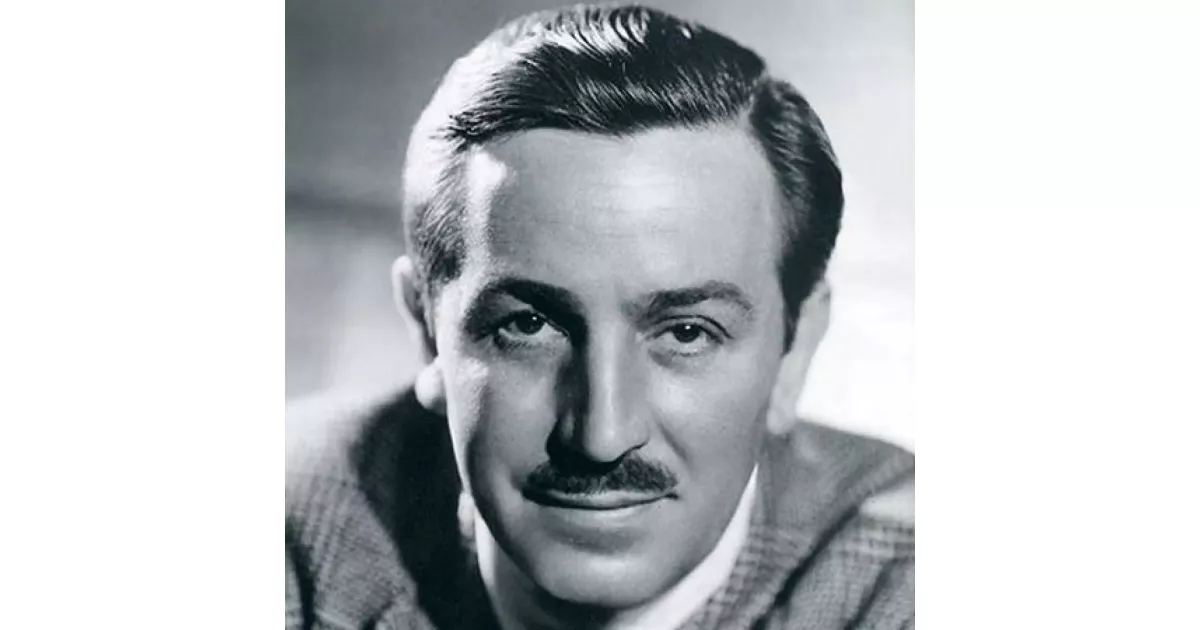Discover the career path of Walt Disney, from the first major opportunity to industry-changing achievements.
Walter Elias Disney was a highly influential American animator, film producer, voice actor, and entrepreneur who revolutionized the animation industry. He achieved unprecedented success, holding the record for most Academy Awards won and nominations received by an individual. Disney's pioneering spirit led to numerous innovations in cartoon production. His films have been recognized for their cultural and artistic significance, with several inducted into the National Film Registry and honored as some of the greatest films ever made.
October 1919: Returned to Kansas City and worked at Pesmen-Rubin
In October 1919, Walt Disney returned to Kansas City and worked as an apprentice artist at the Pesmen-Rubin Commercial Art Studio.
January 1920: Started Iwerks-Disney Commercial Artists
In January 1920, Walt Disney and Ub Iwerks started their own business, the short-lived Iwerks-Disney Commercial Artists, after being laid off from Pesmen-Rubin.
May 1921: Establishment of Laugh-O-Gram Studio
In May 1921, the success of the "Laugh-O-Grams" led to the establishment of Laugh-O-Gram Studio.
July 1923: Moved to Hollywood
In July 1923, Walt Disney moved to Hollywood at 21 years old, hoping to become a live-action film director.
1923: Laugh-O-Gram Studio went into bankruptcy
In 1923, Laugh-O-Gram Studio, established by Walt Disney, went into bankruptcy.
July 1924: Hired Ub Iwerks
In July 1924, Walt Disney hired Ub Iwerks, persuading him to relocate to Hollywood from Kansas City.
1926: Charles Mintz took over the Alice series distribution
In 1926, Charles Mintz took over Winkler's role in the distribution of the Alice series.
1926: First Walt Disney Studio Established
In 1926, the first official Walt Disney Studio was established at 2725 Hyperion Avenue.
July 1927: End of the Alice series
In July 1927, the Alice series ended, and Walt Disney began to tire of it, wanting to move away from the mixed format to all animation.
1927: The Jazz Singer Sensation
Following the 1927 sensation of The Jazz Singer, Disney used synchronized sound on the third short, Steamboat Willie, to create the first post-produced sound cartoon.
February 1928: Lost rights to Oswald the Lucky Rabbit
In February 1928, Walt Disney lost the intellectual property rights to Oswald the Lucky Rabbit and most of his animation staff after declining Mintz's ultimatum.
May 1928: Mickey Mouse's First Appearance
In May 1928, Mickey Mouse first appeared in a single test screening of the short Plane Crazy.
1928: Mickey Mouse Developed
In 1928, Walt Disney and Ub Iwerks developed the character Mickey Mouse, which became Disney's first highly popular success. Disney also provided the voice for Mickey in the early years.
1929: The Skeleton Dance Released
In 1929, the first Silly Symphony, The Skeleton Dance, was released. The short film was drawn and animated entirely by Ub Iwerks.
1930: Introduction of Pluto
In 1930, Disney and his crew introduced new cartoon stars like Pluto.
1932: Introduction of Goofy and Flowers and Trees release
In 1932, Disney and his crew introduced new cartoon stars like Goofy. Furthermore, Disney filmed Flowers and Trees in full-color three-strip Technicolor and secured exclusive rights to the process until 1935. Flowers and Trees won the Academy Award for best Short Subject (Cartoon).
1933: Release of The Three Little Pigs
In 1933, Disney produced The Three Little Pigs, which was the most successful short animation and won Disney another Academy Award. The studio's staff increased due to the film's success, and Disney invested in a "story department".
1934: Introduction of Donald Duck
In 1934, Disney and his crew introduced new cartoon stars like Donald Duck.
1934: Production of Snow White and the Seven Dwarfs begins
In 1934, Disney became dissatisfied with producing cartoon shorts and started the production of Snow White and the Seven Dwarfs. The industry predicted it would bankrupt the company and nicknamed it "Disney's Folly".
August 31, 1935: End of exclusive Technicolor rights
On August 31, 1935, Disney's exclusive rights to use the three-strip Technicolor process expired.
December 1937: Premiere of Snow White
In December 1937, Snow White premiered to high praise from critics and audiences.
1937: Snow White and the Seven Dwarfs Release
In 1937, Walt Disney released Snow White and the Seven Dwarfs, which furthered the development of animated film.
1937: The Old Mill release and multiplane camera implementation
In 1937, the Silly Symphony The Old Mill won the Academy Award for Animated Short Film due to its impressive visual power. Disney ordered scenes from Snow White to be re-drawn to implement the multiplane camera effects. Bambi was also in production since 1937.
1937: Bambi in production
Since 1937, Disney's feature film Bambi had been in production.
1938: Start of Pinocchio and Fantasia production
In early 1938, the studio began producing Pinocchio, and in November of the same year, Fantasia.
May 1939: Snow White becomes most successful sound film
By May 1939, Snow White's total gross of $6.5 million made it the most successful sound film made to that date.
October 1940: Contracts from the United States Armed Forces to make training films
As early as October 1940 (over a year before America's entry into the war), Disney began enlisting contracts from various branches of the United States Armed Forces to make training films.
1940: Release of Pinocchio and Fantasia
In 1940, Walt Disney released the animated films Pinocchio and Fantasia, contributing to the advancement of animated film.
1940: First public stock offering and salary cuts
In 1940, in response to the financial crisis, Disney and his brother Roy started the company's first public stock offering and implemented heavy salary cuts.
March 1941: Formal Offer of Services for National Defence Industries
In March 1941, Disney held a luncheon with Government representatives formally offering his services "...for national defence industries at cost and without profit. In making this offer, I am motivated solely by a desire to help as best I can in the present emergency."
1941: Animators' strike and Dumbo release
In 1941, animators went on strike for five weeks due to salary cuts and Disney's management style. Disney went on a goodwill trip to South America during the negotiations. The studio released Dumbo, which was produced inexpensively and received positive reviews.
August 1942: Release of Bambi
In August 1942, Bambi was released but underperformed, losing $200,000 at the box office.
1942: Release of Bambi
In 1942, Walt Disney released Bambi, contributing to the development of animated film.
1943: Release of Victory Through Air Power
In 1943, Disney released the feature film Victory Through Air Power, a propaganda production.
1947: Walt Disney stopped voicing Mickey Mouse
In 1947, Walt Disney stopped providing the voice for Mickey Mouse, a role he had filled since the character's creation.
1948: Initiation of True-Life Adventures Series
In 1948, Disney initiated the True-Life Adventures series of live-action nature films, with Seal Island as the first film, which won an Academy Award.
1950: Television special about Alice in Wonderland
In 1950, Disney was involved in a successful television special on Christmas Day about the making of Alice in Wonderland.
1950: Release of Cinderella
In 1950, Walt Disney released Cinderella, which was critically successful.
1950: Release of Cinderella and Treasure Island
In early 1950, Disney produced Cinderella, which was popular and earned nearly $8 million in its first year. Also in 1950, Disney was involved in Treasure Island, his first entirely live-action feature, shot in Britain.
March 1951: Roy's letter to shareholders about television
In a March 1951 letter to shareholders, Roy wrote that television can be a most powerful selling aid and a source of revenue.
1951: Release of Alice in Wonderland
In 1951, Disney released the full-length animated feature Alice in Wonderland.
March 1952: Zoning permission for theme park in Burbank
In March 1952, Disney received zoning permission to build a theme park in Burbank, near the Disney studios. The site was too small, and a larger plot in Anaheim was purchased.
1952: Release of The Story of Robin Hood and His Merrie Men
In 1952, Disney released The Story of Robin Hood and His Merrie Men, which was shot in Britain.
1953: Release of Peter Pan
In 1953, Disney released the full-length animated feature Peter Pan.
1954: Walt Disney's Disneyland broadcast on ABC
In 1954, after the Disneyland funding had been agreed, ABC broadcast Walt Disney's Disneyland, an anthology consisting of animated cartoons, live-action features and other material from the studio's library.
April 1955: Newsweek calls the Disneyland series an American institution
In April 1955, Newsweek called the Disneyland series an American institution, after ABC broadcast Walt Disney's Disneyland in 1954. ABC was pleased with the ratings, leading to Disney's first daily television program, The Mickey Mouse Club.
July 1955: Disneyland opens
In July 1955, Disneyland opened and the opening ceremony was broadcast on ABC. The park was designed as a series of themed lands and was successful, attracting 3.6 million guests by the end of its first year.
1955: Man in Space and Lady and the Tramp
In 1955, Disney was involved in "Man in Space", an episode of the Disneyland series, created in collaboration with NASA's Wernher von Braun. 1955 also saw Disney oversee aspects of "Lady and the Tramp", the first animated film in CinemaScope.
January 1958: Airing of "Career Day" segment on The Mickey Mouse Club focusing on the FBI
In January 1958, a certain installment of the "Career Day" newsreel segments on The Mickey Mouse Club focusing on the FBI aired.
1959: Sleeping Beauty Release
In 1959, Disney oversaw aspects of the full-length feature "Sleeping Beauty", which was the first animated film in Technirama 70 mm film.
1959: Consultant to the American National Exhibition in Moscow
In 1959, Disney was a consultant to the American National Exhibition in Moscow; Disney Studios' contribution was America the Beautiful, a 19-minute film in the 360-degree Circarama theater.
1959: Release of Sleeping Beauty
In 1959, Walt Disney released Sleeping Beauty, adding to his collection of animated and live-action films.
1960: Chairman of the Pageantry Committee for the 1960 Winter Olympics
In 1960, Disney acted as the chairman of the Pageantry Committee for the 1960 Winter Olympics in Squaw Valley, California, where he designed the opening, closing, and medal ceremonies.
1960: Involvement in Winter Olympics
In 1960, Walt Disney was involved in planning the Winter Olympics.
1961: One Hundred and One Dalmatians Release
In 1961, Disney oversaw aspects of the full-length feature "One Hundred and One Dalmatians", which was the first animated feature film to use Xerox cels.
1961: Unmade educational short about child molestation
In 1961, Walt Disney was involved in the production of an unmade educational short warning children about the dangers of child molestation.
1962: Disney company becomes sole owner of Celebrity Sports Center
In 1962, the Disney company became the sole owner of the Celebrity Sports Center, after Disney and Roy bought out the other investors.
1963: The Sword in the Stone Release
In 1963, Disney oversaw aspects of the full-length feature "The Sword in the Stone".
1963: Theme Park Project in St. Louis
In 1963, Disney presented a project to create a theme park in downtown St. Louis, Missouri; he initially reached an agreement with the Civic Center Redevelopment Corp, which controlled the land, but the deal later collapsed over funding.
1964: Mary Poppins Production and CalArts Expansion Plans
In 1964, Disney produced "Mary Poppins", based on the book series by P. L. Travers, after trying to acquire the rights since the 1940s. It was the most successful Disney film of the 1960s. In 1964, Disney also became involved in plans to expand the California Institute of the Arts (CalArts) and had an architect draw up blueprints for a new building.
1964: Disney's Exhibits for the 1964 New York World's Fair
In 1964, Disney provided four exhibits for the New York World's Fair, funded by corporate sponsors. These included It's a Small World for PepsiCo, Great Moments with Mr. Lincoln, Carousel of Progress, and Ford's Magic Skyway. Elements were later re-installed in Disneyland.
1964: Release of Mary Poppins
In 1964, Walt Disney released Mary Poppins, which received five Academy Awards.
1964: Involvement in New York World's Fair
In 1964, Walt Disney was involved in planning the New York World's Fair.
1965: Development of Disney World and EPCOT
In 1965, Walt Disney began developing Disney World and the "Experimental Prototype Community of Tomorrow" (EPCOT).
1965: Plans for Disney World Announced
In late 1965, Disney announced plans to develop another theme park called "Disney World", near Orlando, Florida, which would include the "Magic Kingdom", golf courses, resort hotels and the "Experimental Prototype Community of Tomorrow" (EPCOT).
1966: Cultivating Businesses for EPCOT and story credit in Lt. Robin Crusoe, U.S.N.
During 1966, Disney cultivated businesses willing to sponsor EPCOT. He received a story credit in the 1966 film Lt. Robin Crusoe, U.S.N. as Retlaw Yensid, his name spelt backwards. He increased his involvement in the studio's films, and was heavily involved in the story development of The Jungle Book, the live-action musical feature The Happiest Millionaire (both 1967) and the animated short Winnie the Pooh and the Blustery Day (1968).
1967: Release of The Jungle Book and The Happiest Millionaire
In 1967, "The Jungle Book" and "The Happiest Millionaire", films that Disney was heavily involved in during the story development, were released.
1968: Involvement in Winnie the Pooh and the Blustery Day
In 1968, Disney was heavily involved in the story development of the animated short Winnie the Pooh and the Blustery Day.
Mentioned in this timeline
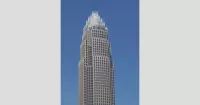
Bank of America is a multinational investment bank and financial...
California is a U S state on the Pacific Coast...

Tom Hanks is a highly acclaimed American actor and filmmaker...
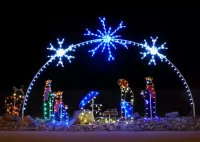
Christmas is an annual festival celebrated on December th commemorating...
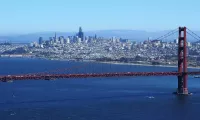
San Francisco is a major commercial financial and cultural hub...
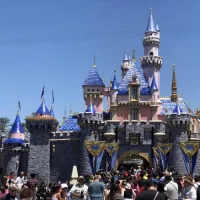
Disneyland located in Anaheim California is the first theme park...
Trending

6 months ago Jason Kelce Wears Patriotic Briefs and Bartends at Charity Event in New Jersey
5 months ago TJ Watt becomes highest-paid non-QB after extension; JJ Watt reacts hilariously.
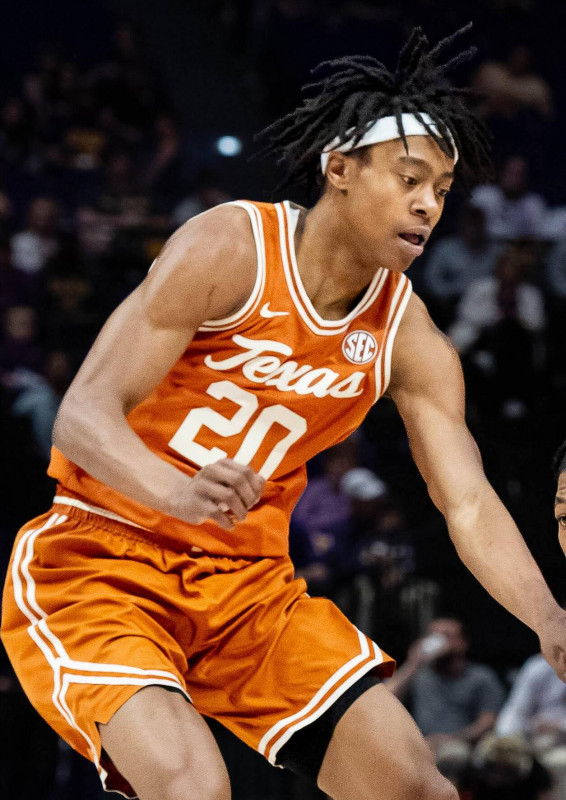
Tre Johnson is an American professional basketball player currently playing shooting guard for the Washington Wizards in the NBA A...

10 months ago Alex Sarr Shines as Wizards Beat Pistons: Sarr's 19 Points Not Enough
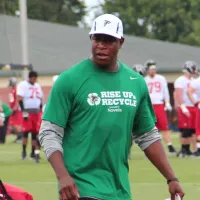
Raheem Morris is an American professional football coach currently serving as the head coach for the Atlanta Falcons He has...
Ryan James Wedding is a Canadian former Olympic snowboarder who competed in the Winter Olympics Following his sports career he...
Popular

Stranger Things created by the Duffer Brothers is a popular...

XXXTentacion born Jahseh Dwayne Ricardo Onfroy was a controversial yet...
The Kennedy Center Honors are annual awards recognizing individuals and...
Turning Point USA TPUSA is an American nonprofit organization founded...

Bernie Sanders is a prominent American politician currently serving as...

Candace Owens is an American conservative political commentator and author...
